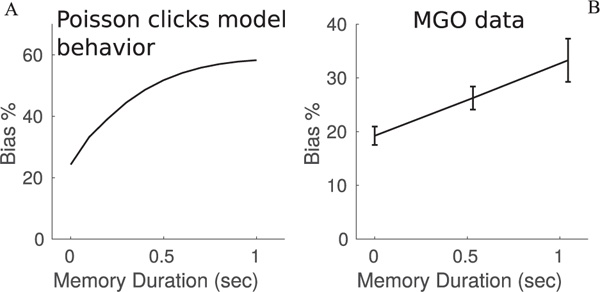Figure 6:

Postcategorization bias grows with memory period duration. (Left) Model prediction for bias during unilateral muscimol inactivation of the FOF as a function of increasing memory period duration. The model produces a bias that increases over time. Bias is relative to control behavior at each memory duration. The model was fit to the Poisson clicks task, not the MGO task. (Right) Unilateral FOF inactivation data from Erlich et al. (2011) shows a bias that grows with memory period duration for MGO trials. Trials were either nonmemory or had a memory period sampled from a distribution with mean 750 msec. Memory period is the time from the end of the stimulus to the go signal. Both trial types had an additional effective memory period between the go signal and the rat’s response. Memory trials were binned by their memory durations into shorter or longer than 750 msec. The solid line shows the average bias on ipsilateral trials at each of the three time bins. Bias in each time duration is relative to control performance on the same time duration. Nonmemory trials show some bias, while longer memory periods have stronger biases. Note that the vertical axis scale is different between plots.
